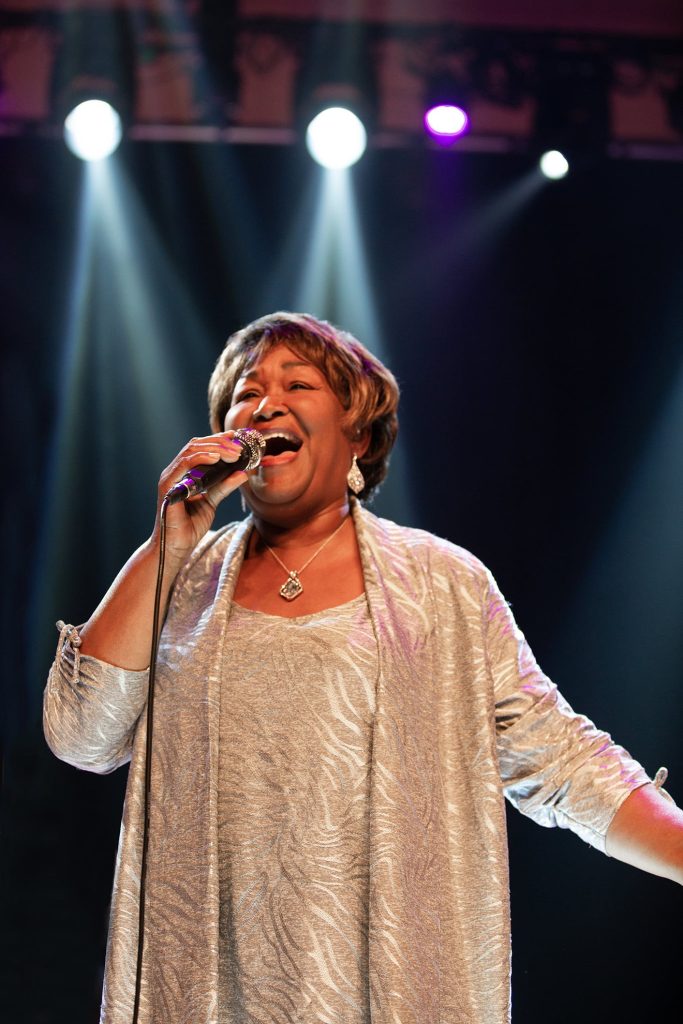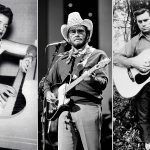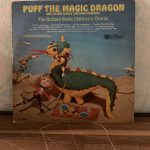Jazz music has evolved into a modern genre that blends traditional elements with contemporary influences. This well-rounded introduction provides an overview of the development and characteristics of jazz music in the modern era.
Jazz music has always been known for its improvisation, syncopated rhythms, and unique tonalities. However, in recent years, jazz has embraced elements of other genres such as rock, hip-hop, and electronic music to create a fresh and innovative sound. This fusion of styles has resulted in a more accessible and diverse form of jazz that appeals to a wider audience.
Modern jazz musicians incorporate new instruments, unconventional techniques, and experimental compositions to push the boundaries of the genre. They often collaborate with artists from different musical backgrounds, further enriching the music with different perspectives and influences. The modern jazz scene is dynamic, vibrant, and constantly evolving, reflecting the changing tastes and preferences of contemporary listeners. Modern jazz music expands on the rich heritage of the genre while incorporating contemporary elements to create a captivating and evolving art form.

Credit: nextbop.com
The Evolution Of Jazz Music
Jazz music is a genre that has been captivating audiences for decades. Its sounds and rhythms have evolved over time, creating a rich and vibrant musical landscape. In this section, we will explore the evolution of jazz music, tracing its roots and examining the influences of african rhythms and blues.
Tracing The Roots Of Jazz Music
Jazz music has a diverse and fascinating history. It originated in the late 19th and early 20th centuries in african-american communities in new orleans, louisiana. Here are some key points to consider:
- Jazz music emerged as a fusion of various musical styles, including ragtime, blues, and marching band traditions.
- Its roots can be traced back to the musical traditions brought to america by african slaves, as well as the cultural exchanges between african, european, and caribbean communities in new orleans.
- Jazz music gained popularity in the early 20th century and spread beyond its birthplace in new orleans, eventually becoming a global phenomenon.
- Its evolution can be seen through the contributions of iconic musicians such as louis armstrong, duke ellington, and miles davis, who pushed the boundaries of the genre, incorporating new elements and styles.
Influences Of African Rhythms And Blues
African rhythms and blues played a crucial role in shaping the distinct sound of jazz music. Here’s what you need to know:
- African rhythms, characterized by syncopation and polyrhythms, infused jazz with a vibrant and energetic groove.
- The concept of improvisation, a key element of jazz, can be traced back to african musical traditions, where spontaneous creativity was highly valued.
- Blues music, with its soulful melodies and expressive lyrics, provided a fertile ground for jazz musicians to explore and expand upon.
- The fusion of african rhythms and blues in jazz created a unique musical language that allowed for individual expression and collective interaction.
As the roots of jazz music were planted and nurtured by african rhythms and blues, the genre continues to grow and evolve. It has had a profound influence on other genres such as rock, pop, and hip-hop, demonstrating the enduring power of its innovative spirit.
Exploring the evolution of jazz music and understanding its diverse influences can deepen our appreciation of this extraordinary art form.
Exploring Contemporary Jazz Genres
Jazz music has come a long way since its birth in the early 20th century. As the genre continues to evolve, new sounds and contemporary jazz genres are constantly being explored. In this section, we will delve into two exciting aspects of modern jazz: the fusion of jazz and pop, and the exploration of experimental jazz.
Fusion Of Jazz And Pop: Creating Modern Melodies
- Jazz and pop music have converged in recent years, giving rise to a fusion of these two genres. This blending of musical styles has created a fresh and modern sound that appeals to a wide range of listeners.
- One of the key characteristics of this fusion is the incorporation of pop melodies and structures into jazz compositions. This has resulted in catchy hooks and memorable choruses that are often found in pop music, but with the improvisation and complexity of jazz.
- The fusion of jazz and pop has also paved the way for collaborations between jazz musicians and pop artists. By bringing together their unique musical backgrounds, these collaborations have produced innovative and boundary-pushing tracks that push the boundaries of both genres.
- This fusion has not only attracted a new audience to jazz music but has also breathed new life into the genre itself. With its irresistible blend of sophistication and accessibility, the fusion of jazz and pop continues to push the boundaries of what jazz can be.
Nurturing New Sounds: Exploring Experimental Jazz
- Experimental jazz, as the name suggests, is a genre that embraces innovation and pushes the boundaries of traditional jazz. It is a playground for musicians to explore new sounds, textures, and techniques, resulting in a diverse and captivating musical landscape.
- One aspect that sets experimental jazz apart is its emphasis on improvisation. Musicians are encouraged to explore new harmonic and melodic possibilities, often incorporating dissonance and unconventional chord progressions into their compositions.
- Another defining characteristic of experimental jazz is its incorporation of non-traditional jazz instruments and unconventional elements. These can range from electronic instruments and effects to spoken word, found sounds, and even elements of avant-garde and free jazz.
- Experimental jazz also places a strong emphasis on collaboration and collective improvisation. Musicians come together to create spontaneous and unpredictable music, allowing for a constant exploration of new sonic territories.
- With its unapologetic embrace of boundary-pushing experimentation, experimental jazz challenges listeners to expand their musical horizons and engage with jazz in new and exciting ways.
In the ever-evolving landscape of jazz music, the fusion of jazz and pop and the exploration of experimental jazz genres continue to captivate and inspire. These contemporary jazz genres push boundaries, foster innovation, and keep the genre fresh and vibrant for both longtime jazz enthusiasts and new listeners alike.
So, whether you find yourself drawn to the infectious melodies of jazz-pop fusion or the adventurous spirit of experimental jazz, there’s no doubt that the modern jazz scene has something remarkable to offer.
The Influence Of Modern Jazz Icons
Jazz music has witnessed an evolution over the years, with modern jazz icons making a significant impact on the genre. These pioneers have broken boundaries and introduced innovative elements to jazz, transforming it into what we know today. In this section, we will delve into the influence of modern jazz icons, highlighting their contributions to the development of this captivating musical style.
Iconic Pioneers: Their Impact On Jazz Music
- Miles davis: The enigmatic miles davis is often regarded as one of the greatest jazz musicians of all time. He revolutionized the genre by incorporating elements of rock and funk, creating a new and exciting sound. Davis’s experimentation with modal jazz, as heard in his iconic album “kind of blue,” set the stage for future innovations in jazz.
- John coltrane: Known for his virtuosic saxophone playing, coltrane pushed jazz to its limits with his innovative approach. His exploration of complex chord progressions and improvisational techniques expanded the possibilities of jazz improvisation. Albums such as “a love supreme” solidified his position as a jazz icon and influenced generations of musicians.
- Herbie hancock: With a career spanning over six decades, herbie hancock has consistently pushed the boundaries of jazz. His fusion of jazz with elements of funk, soul, and even electronic music has earned him critical acclaim. His album “head hunters” introduced jazz fusion to a wider audience and showcased his ability to blend different genres seamlessly.
- Chick corea: An influential figure in the development of jazz fusion, chick corea blended elements of jazz and rock to create a unique and captivating sound. His work with the band return to forever showcased his prowess as both a pianist and composer. Corea’s compositions, such as “spain,” have become jazz standards and continue to inspire musicians today.
Breaking Boundaries: Innovations In Modern Jazz
- Fusion of genres: Modern jazz icons have consistently pushed the boundaries of jazz by incorporating elements from various genres such as rock, funk, and electronic music. This fusion of styles has expanded the sonic landscape of jazz, appealing to a broader audience and ensuring the genre’s continued relevance.
- Experimental approaches: The modern jazz movement has embraced experimentation, encouraging musicians to explore unconventional techniques and sounds. The use of dissonance, complex time signatures, and free improvisation has resulted in truly groundbreaking compositions that challenge traditional notions of jazz.
- Embracing technology: In the digital age, modern jazz musicians have embraced technology to enhance their music. From incorporating electronic instruments and effects pedals to utilizing digital audio workstations for composition and production, technology has allowed for new possibilities within the jazz realm.
- Inclusion and diversity: Modern jazz has become more inclusive, with musicians from diverse backgrounds bringing their unique perspectives to the genre. This infusion of different cultural influences has enriched the jazz scene, leading to the emergence of exciting subgenres and the celebration of multicultural music.
Modern jazz icons have had a profound influence on the evolution of jazz music. Through their innovative approaches, these pioneers have broken boundaries, expanded the genre’s horizons, and ensured its continued relevance in the contemporary music landscape. Their contributions will forever be cherished and continue to inspire future generations of jazz musicians.
Unearthing The Essence Of Modern Jazz
Jazz music has evolved over the years, adapting to the changing times while still retaining its core essence. Modern jazz, in particular, showcases a fusion of traditional jazz elements with contemporary influences. In this section, we will delve into the captivating aspects of modern jazz, exploring the emotional expressions and complex harmonies that make it such a remarkable genre.
Emotional Expressions: The Soulful Side Of Jazz
Modern jazz has a rich history of stirring emotions and conveying deep feelings through its music. Here are some key points to consider:
- Ethereal improvisations: One of the defining characteristics of modern jazz is the freedom of expression it grants to the musicians. Through improvisations, jazz artists can tap into raw emotions and create truly unique musical moments.
- Melodic storytelling: Jazz melodies have the power to transport listeners to different realms. They can weave intricate tales, evoking a wide range of emotions from joy and exhilaration to melancholy and longing.
- Dynamic contrasts: Modern jazz often embraces contrasts in tempo, dynamics, and mood, allowing for a dynamic interplay between instruments. This adds depth and intensity to the emotional journey the music takes the listener on.
- Personal catharsis: Jazz musicians often find solace and emotional release through their music. The very act of expressing themselves through their instruments can be therapeutic and provide a way to channel personal experiences and emotions.
Complex Harmonies: Captivating The Listener’S Ear
One of the greatest allurements of modern jazz lies in its complex harmonies, which contribute to its distinctive sound. Here are some important aspects to note:
- Extended chord voicings: Modern jazz explores harmonies beyond traditional major and minor triads. Musicians frequently employ extended chord voicings, such as seventh chords, ninth chords, and even more complex structures, to create intricate and harmonically rich compositions.
- Chromaticism and dissonance: Jazz harmonies often incorporate chromatic notes and dissonant intervals, adding a touch of unpredictability and tension to the music. This creates complexity and intrigue that captivates the listener’s ear.
- Harmonic progressions: Modern jazz embraces unconventional harmonic progressions, stepping away from the more predictable patterns found in other genres. This willingness to break traditional rules opens up new possibilities in musical exploration and innovation.
- Modal and tonal interplay: Jazz musicians skillfully navigate between modal and tonal frameworks, blending them seamlessly to create a unique fusion of sounds. This interplay between different musical modes enhances the complexity and richness of modern jazz compositions.
With emotional expressions that touch the soul and harmonies that challenge the listener’s ear, modern jazz continues to enchant audiences around the world. It’s a genre that constantly pushes boundaries, allowing for artistic expression and a blend of tradition and innovation.
So, dive into the world of modern jazz and let its essence transport you to a realm of musical bliss.
The Role Of Improvisation In Modern Jazz
Jazz music has continued to evolve and adapt over the years, embracing new styles and techniques while still honoring its rich tradition. One of the most distinctive features of modern jazz is the role of improvisation. Jazz musicians are not just performers but also storytellers, using the art of improvisation to express themselves and connect with their audience.
In this section, we will explore the importance of improvisation in modern jazz and how it blends tradition with innovation.
Jazz Musicians As Storytellers: The Art Of Improvisation
- Jazz musicians view improvisation as a form of storytelling, using their instruments to convey emotions and create musical narratives.
- Improvisation allows jazz musicians to express their individuality and unique musical voice, making each performance a personal and authentic experience.
- Through improvisation, jazz musicians engage in a musical dialogue with their fellow band members, responding and interacting in real-time.
- The art of improvisation requires a deep understanding of jazz theory, harmony, and rhythm, as well as the ability to think quickly and make decisions on the spot.
- Jazz musicians draw inspiration from the melody and chord progressions of a piece, improvising new melodies, harmonies, and rhythms that fit seamlessly into the overall musical framework.
Blending Tradition With Innovation: Innovations In Modern Jazz Improvisation Techniques
- Modern jazz improvisation techniques build upon the foundations set by earlier jazz musicians, such as louis armstrong and charlie parker, while incorporating new elements and approaches.
- Jazz musicians today explore a wide range of improvisation techniques, including chord-scale theory, modal playing, and polyrhythms, to create fresh and dynamic musical expressions.
- The use of extended techniques, such as multiphonics, slap tonguing, and col legno, adds further texture and variety to modern jazz improvisation.
- Jazz musicians also experiment with unconventional scales and modes, expanding the harmonic possibilities and creating new tonal colors within their improvisations.
- Technology has also played a role in shaping modern jazz improvisation, with the use of digital effects, looping devices, and electronic instruments enabling musicians to explore new sonic landscapes.
Improvisation is at the heart of modern jazz music. It allows jazz musicians to tell stories, express their individuality, and engage in a musical conversation with their fellow musicians. By blending tradition with innovation, modern jazz improvisation techniques continue to push the boundaries of the genre and captivate audiences with their creativity and artistry.
Jazz Fusion: The Meeting Point Of Genres
Jazz music has always been a genre known for its ability to evolve and adapt, but perhaps none have been as groundbreaking as jazz fusion. This subgenre emerged in the late 1960s, bringing together the best elements of jazz with other popular genres like rock and latin music.
Jazz fusion quickly gained popularity and has since become a staple in the world of modern jazz. In this section, we will explore two significant branches of jazz fusion: jazz and rock fusion and latin jazz.
Jazz And Rock Fusion: A Dynamic Collaboration
- Jazz and rock may seem like two completely different worlds, but the fusion of these genres has created some truly remarkable music. Here are the key points to consider:
- Electric instruments take center stage: Jazz and rock fusion brings electric guitars, keyboards, and synthesizers to the forefront, adding a new layer of energy and intensity to the traditional jazz sound.
- Complex rhythms and improvisation: Rock music’s driving backbeat and rhythmic patterns blend seamlessly with jazz’s emphasis on syncopation and improvisation. The result is an explosive mix of intricate rhythms and soulful solos.
- Experimentation with structure and form: Jazz and rock fusion challenges traditional song structures by incorporating elements of both genres. Verses and choruses may be replaced by extended improvisations and intricate instrumental interplay.
- Influential artists: Some of the most influential artists in jazz and rock fusion include miles davis, herbie hancock, john mclaughlin, and chick corea. Their innovative compositions and virtuosic performances continue to inspire musicians to this day.
Exploring Latin Jazz: Adding Rhythm And Spice
- Latin jazz takes the infectious rhythms and vibrant melodies of latin music and combines them with the improvisational nature of jazz. Here’s what you need to know:
- Blending of cultures: Latin jazz is a beautiful fusion of african, european, and caribbean musical traditions. It blends the percussive rhythms of afro-cuban and brazilian music with the harmonies and improvisation of jazz.
- A wide variety of styles: Latin jazz encompasses various subgenres, including bossa nova, samba, afro-cuban jazz, and salsa. Each style adds its unique flavor and cultural influences to the mix.
- Emphasis on percussion: Latin jazz places significant emphasis on percussion instruments such as congas, bongos, and timbales. These instruments add layers of rhythmic complexity and groove to the music.
- Notable artists: Jazz legends like dizzy gillespie, tito puente, and chucho valdés have made significant contributions to the world of latin jazz. Their blending of latin rhythms with jazz improvisation has paved the way for future generations of musicians.
Jazz fusion continues to push boundaries and expand the possibilities of jazz music. Whether through the dynamic collaboration of jazz and rock or the rhythmic spice of latin jazz, these subgenres offer a thrilling and captivating experience for both musicians and listeners alike.
So, sit back, relax, and let the sounds of jazz fusion transport you to new musical horizons.
Jazz In The Digital Age
Jazz has always been a genre associated with innovation and evolution, and in the digital age, it has embraced modern technologies to reach a wider audience than ever before. The changing landscape of jazz has been greatly influenced by advancements in technology, particularly in the realm of online platforms and social media.
Let’s explore how jazz has adapted to the digital era and the impact of social media on the genre.
The Changing Landscape Of Jazz: Modern Technologies And Jazz Music
- Digital recording and distribution: With the advent of digital recording technologies, jazz musicians are able to capture their music with greater precision and clarity. This has not only made the process more convenient but also has allowed for easier distribution, enabling jazz music to reach a global audience instantly.
- Online streaming platforms: Platforms like spotify, apple music, and tidal have revolutionized the way people consume music, providing jazz artists with new opportunities for exposure. Jazz enthusiasts can now easily discover and explore a vast catalogue of jazz recordings, promoting the growth and accessibility of the genre.
- Collaborative opportunities: Modern technologies have brought new opportunities for jazz musicians to collaborate and create music. Through virtual collaborations, artists can seamlessly work together regardless of their geographical location, pushing the boundaries of creativity and expanding the possibilities within the genre.
- Music production software: Jazz musicians now have access to an array of music production software that allows them to experiment with different sounds, effects, and arrangements. This technological advancement has opened up new avenues for artistic expression and innovation within jazz music.
Jazz In The Online World: The Impact Of Social Media
- Increased visibility and fan engagement: Social media platforms like facebook, instagram, and twitter allow jazz artists to connect directly with their fans. Through regular updates, live sessions, and behind-the-scenes content, musicians can build a loyal following and engage with their audience on a more personal level.
- Promotion and marketing: Social media has become an invaluable tool for promoting jazz music. Artists can share snippets of their music, concert announcements, and music videos to generate excitement and interest. The online world allows for targeted advertising, reaching jazz enthusiasts who may have otherwise been difficult to reach.
- Collaborative networks: Online platforms and social media have facilitated the formation of collaborative networks within the jazz community. Musicians can discover and connect with fellow artists, leading to inspiring collaborations and the exchange of musical ideas.
- Community building: Jazz lovers can come together on social media platforms to create vibrant online communities. These communities foster discussions, share recommendations, and celebrate the rich history and ongoing developments within the jazz genre.
In the digital age, jazz has found new avenues for creativity, audience engagement, and community building. Modern technologies and social media have enabled jazz musicians to share their art with a global audience, expanding the genre’s reach and securing its place in the ever-evolving musical landscape.
Frequently Asked Questions Of Jazz Music Modern
What Is Jazz Music Modern?
Jazz music modern refers to the contemporary form of jazz that has evolved over time with new and innovative elements while still maintaining the essence of traditional jazz. It incorporates various genres and influences, making it accessible to a wider audience and showcasing the creativity of modern jazz musicians.
How Has Jazz Music Evolved Over Time?
Jazz music has evolved over time by incorporating various musical styles, such as ragtime, blues, swing, bebop, and fusion. It has embraced new technologies and instruments, reflecting the changing social and cultural landscape. This evolution has led to the development of different jazz sub-genres and a fusion of jazz with other genres like rock, hip-hop, and electronic music.
Who Are Some Notable Modern Jazz Musicians?
Some notable modern jazz musicians include kamasi washington, esperanza spalding, robert glasper, christian scott, and snarky puppy. These artists have pushed the boundaries of jazz by infusing it with elements of funk, r&b, and other contemporary genres, while still honoring the improvisational and expressive nature of the music.
What Makes Jazz Music Modern And Relevant Today?
Jazz music remains modern and relevant today due to its ability to adapt and incorporate new musical influences. It continues to be a platform for self-expression, improvisation, and collaboration among musicians. Its timeless appeal lies in its ability to connect emotionally with listeners and capture the spirit of the times through its evolving sound.
How Can I Explore Modern Jazz Music?
You can explore modern jazz music by listening to contemporary jazz artists, attending live performances in jazz clubs or festivals, and delving into jazz streaming platforms or playlists curated by experts. Additionally, reading books and articles about modern jazz history and watching documentaries can provide insight into the genre’s evolution and key figures.
What Are The Key Elements Of Modern Jazz Music?
Modern jazz music incorporates key elements such as complex harmonies, improvisation, syncopation, and rhythmic diversity. It often utilizes non-traditional song structures and explores experimental techniques and instrumentations. Modern jazz musicians aim to break away from conventions while maintaining the integrity and spirit of jazz, resulting in a fresh and dynamic musical experience.
Conclusion
Jazz music continues to evolve and thrive in the modern era, captivating audiences with its timeless appeal and innovative spirit. This genre, characterized by its improvisational style and complex harmonies, has transcended boundaries and cultures, becoming a global phenomenon. Through the years, jazz has seamlessly incorporated elements from different genres, creating unique sounds that appeal to a wide range of listeners.
The modern jazz scene is a vibrant tapestry of talent and creativity, with contemporary artists pushing the boundaries and redefining the genre. With the advent of digital technology and social media platforms, jazz musicians have found new ways to connect with their audience and share their music.
Online streaming platforms have given rise to a new wave of jazz enthusiasts, who have easy access to a vast array of jazz recordings, old and new. As we navigate the complexities of the modern world, jazz stands as a testament to the power of art and expression.
Its ability to adapt and evolve ensures its relevance in the ever-changing musical landscape. Whether through intimate live performances or the convenience of digital platforms, jazz music continues to captivate and inspire audiences, bridging gaps and fostering a sense of unity.
So, let the melodious notes of jazz guide us forward into a future where creativity knows no bounds.













